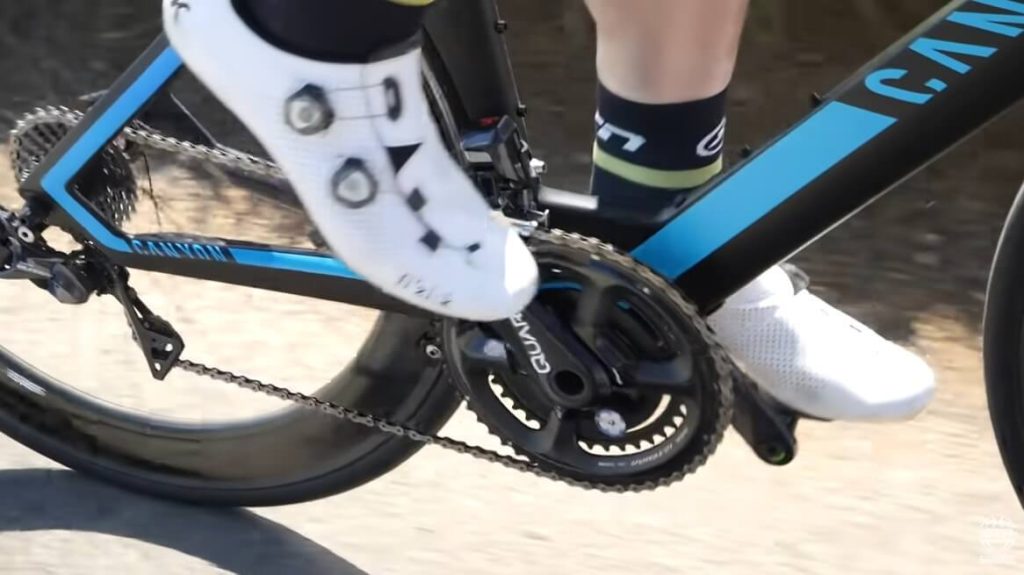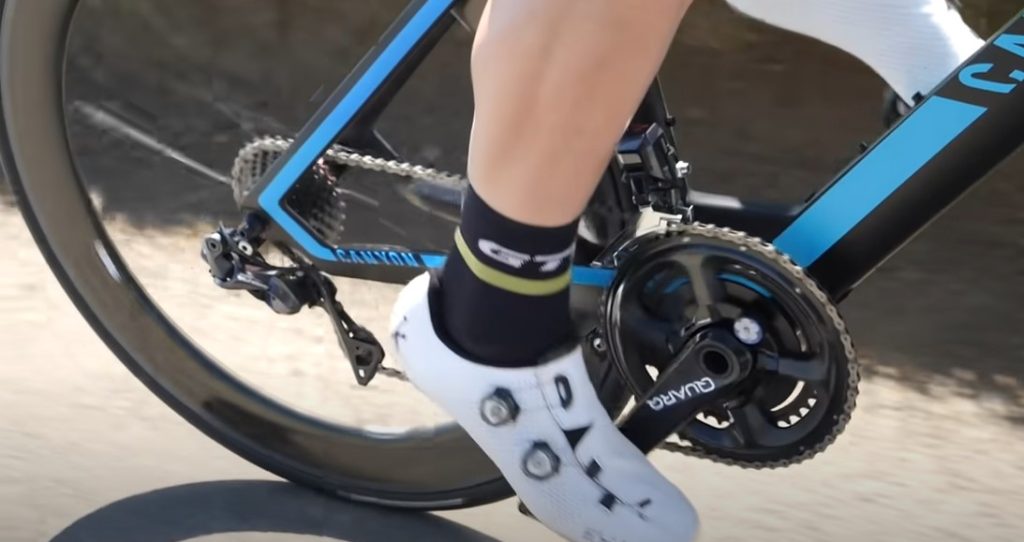Road bike gears for dummies are typically a beginner-friendly gearing system with simpler functionalities for a comfortable cycling experience. For those new to cycling, the world of road bike gears can be a confusing place.
Even seasoned riders occasionally struggle with understanding the intricacies of gear ratios and shifting mechanisms. Knowing which gears to use when riding uphill, downhill, or on unfavorable terrains can make a huge difference in your overall riding experience. Without the right gears, you may find yourself constantly exhausted or struggling to pedal smoothly.
This article makes it easy for beginners to understand and choose the right road bike gears for a comfortable and enjoyable ride.

Types Of Road Bike Gears
Road cycling can be an exhilarating and effective way to stay fit, explore new areas, and enjoy the great outdoors. However, many beginners can find themselves overwhelmed with the many different types of road bike gears and how to use them effectively.
We will provide you with a beginner’s guide to the different types of road bike gears to help make your road cycling experience smoother and more enjoyable.
Overview Of The Different Types Of Road Bike Gears
Before we dive into the specific types of road bike gears, it’s important to have a general understanding of the components that make up a bike’s gear system. The gears of a road bike typically consist of the following:
- Derailleurs
- Cassette
- Chainrings
- Shifters
- Crankset
Each of these components plays an essential role in determining the gear ratio and shifting the chain to make cycling easier or harder, depending on the terrain.
Derailleurs
The derailleurs are an essential component of a road bike’s gear system. They are responsible for shifting the chain between gears by moving the chain laterally between the cassette and the chainrings. Some of the key features of derailleurs include:
- Available in front and rear models depending on the number of chainrings and cassette cogs.
- Each derailleur has a specific capacity which relates to the maximum number of teeth it can accommodate in its three positions.
- Modern derailleurs usually have 11 speeds or more.
Cassette
The cassette is another component that plays an important role in the bike’s gear system. It’s the set of gears mounted on the rear wheel and works with the derailleur to shift the chain between gears. Some important points to remember about the cassette include:
- Available in various sizes, which determines the range of gears on the bike.
- Typically, the more cogs a cassette has, the wider the range of gears.
- Cassettes can have different numbers of teeth on each cog.
Chainrings
The chainrings are the gears found attached to the cranks, located between the pedals. They work with the front derailleur to shift the chain between gears. Some key points to remember about chainrings include:
- Road bikes can have between 1 and 3 chainrings, with 2 being the most common.
- The combination of chainring sizes determines the overall gear ratio.
- Chainrings come in various sizes, with larger sizes being easier gearing and vice versa
Shifters
The shifters are the controls that adjust the gears on a bike, typically located on the handlebars. They work by pulling or releasing the derailleur cables to move the chain between gears. Some important points to keep in mind about shifters include:
- Available in either mechanical or electronic models.
- The position of the shifter determines which derailleur moves and how many gears shift at one time.
- Modern shifters tend to work with bikes that have a greater number of gears.
Crankset
Finally, the crankset is the set of pedals, and the component that the chainrings are attached to. The crankset plays a crucial role in determining the gearing and pedal efficiency of a bike. Some key facts worth remembering about the crankset include:
- Available in various lengths, with shorter lengths being popular for riders with shorter legs.
- The material of the crankset can affect its durability and weight.
- The number of teeth on the chainrings can vary, with larger numbers being harder gearing.
Understanding the different types of road bike gears is essential for improving your cycling performance. Knowing how each component works will allow you to shift gears effortlessly and help you to get the most out of your road bike. Remember to always maintain your gears and seek advice from an expert if necessary.
Understanding Road Bike Gear Ratios
Definition And Explanation Of Gear Ratios
If you’re new to the world of cycling, understanding gear ratios can seem overwhelming. Gear ratio is the numerical representation of the mechanical advantage of a road bike’s drivetrain. It shows the number of rotations by the pedal required for the rear wheel to spin once.
The gear ratio is determined by the number of teeth on the chainrings and the cassette.
When you pedal, the chain transmits power from the chainring to the cassette, which rotates the rear wheel, propelling the bike forward. Gear ratios are essential for controlling the power output to navigate the terrain while conserving energy.
Here are a few more key things to consider when it comes to gear ratios:
- The higher the gear ratio, the harder it is to pedal, but the faster you can go.
- The lower the gear ratio, the easier it is to pedal, but the slower the bike goes.

Importance Of Understanding Gear Ratios
As mentioned above, gear ratios play a significant role in how your bike manages different terrain. Understanding gear ratios will allow you to select the right gears for the right situations. Riding with the correct gear ratios will provide you with the following benefits:
- Increases your speed and allows you to travel further with less effort.
- Helps maintain the right cadence, which is essential for conserving energy, avoiding leg fatigue, and preventing injury.
- Provides the right amount of power output to manage different terrains.
How To Calculate Gear Ratios
Calculating gear ratios isn’t as tricky as it seems. Here is a simple formula that helps you calculate gear ratios:
- Gear ratio = chainring teeth/ cassette teeth.
For example: if your bike has a 50-tooth chainring and a 25-tooth sprocket on the cassette, the gear ratio would be two (50/25).
How Gear Ratios Affect Your Riding
Aside from speed and cadence, gear ratios affect your riding in various ways. Here are a few things to consider when it comes to the impact gear ratios have on your riding experience:
- Hill climb: A low gear ratio is ideal when climbing hills. It allows you to keep a steady cadence while putting in less effort.
- Descending: A high gear ratio is perfect for descending. It enables you to go faster while putting in less effort to pedal.
- Flat terrain: A medium gear ratio is suitable for flat terrain. It offers the perfect balance between speed, power, and cadence.
Understanding gear ratios is vital for any cyclist. The right gear ratios ensure you’re comfortable while riding, prevent injury, and conserve energy. So, the next time you’re looking to buy a new road bike or upgrade your drivetrain, keep gear ratios in mind.
How To Choose The Right Road Bike Gears?
Choosing the right road bike gears can be overwhelming, especially if you’re new to cycling. It’s essential to have the right gears for your road bike to make your ride as smooth as possible. Below are some factors to consider when choosing road bike gears.
Factors To Consider When Choosing Road Bike Gears
Before selecting the gears for your road bike, it’s essential to take into account several key factors. These include:
- Your fitness level
- The terrain you will be cycling on
- Your riding style
- Your bike’s drivetrain components
Understanding The Terrain
When choosing the right road bike gears, you need to take into account the terrain you will be cycling on. The gear ratio you choose should be based on the incline of the road you will be riding on. If you’re cycling on a flat road, you can choose a higher gear ratio.
On the other hand, if you’re cycling on hilly terrain, you may need a lower gear ratio to make it up those hills without burning out.
Your Fitness Level
Your fitness level also plays a significant role in determining the right road bike gears for you. If you’re new to cycling, you may need to start with lower gear ratios until you build up your stamina. Conversely, if you’re an experienced cyclist, a higher gear ratio may be suitable for you to push your limits.
Tips For Choosing The Right Gears For Your Road Bike
- Aim for a gear range with a low bottom end and a high top end so that you can tackle any terrain.
- Choose a gear ratio that you’re comfortable with to avoid burning out quickly.
- Consider investing in a bike that allows for easy gear changes using a button or lever on the handlebars.
How To Adjust Your Road Bike Gears
Once you’ve selected your desired road bike gears, it’s crucial to ensure they’re correctly adjusted. Follow these steps for proper adjustment:
- Shift the bike to its lowest gear, moving the chain onto the smallest chainring and the largest rear sprocket.
- Loosen the derailleur cable by unclamping it from the derailleur.
- Adjust the derailleur’s high limit screw to ensure the chain is central over the smallest chainring.
- Shift the bike to its highest gear, moving the chain onto the largest chainring and the smallest rear sprocket.
- Adjust the derailleur’s low limit screw to make sure the chain is central over the largest chainring.
- Reattach the cable and adjust its tension for smooth gear changes.
Choosing the right road bike gears is crucial for ensuring a smooth ride. Consider the terrain and your fitness level when selecting your gear ratio and make sure they’re correctly adjusted. With these tips, you’ll be ready to tackle any road on your bike.

Frequently Asked Questions Of What Road Bike Gears For Dummies
What Are Road Bike Gears?
Road bike gears are mechanisms that change the ratio between the number of teeth on the front and rear sprockets.
Why Are Gears Important When Riding A Road Bike?
Gears allow riders to pedal comfortably at different speeds and climb hills with ease. They also help maintain a consistent cadence.
What Is The Ideal Gear Range For A Road Bike?
The ideal gear range for a road bike depends on your fitness level, the terrain, and the type of riding you do. Generally, a range of 30-100 gear inches is suitable.
Should I Upgrade My Road Bike Gears?
Upgrading your road bike gears could improve your bike’s performance and make your ride more enjoyable. It ultimately depends on your personal preferences and riding goals.
Conclusion
After reading this post, you are no longer a dummy when it comes to road bike gears. By understanding how the gears work, selecting the right gear combination, and utilizing proper shifting techniques, you can have a more efficient and enjoyable ride.
Additionally, knowing the different types of gears can help you choose the best option for your riding style and terrain. Keep in mind the importance of maintaining your gears through regular cleaning and lubrication. By applying the knowledge gained from this post, you can confidently tackle any road bike ride with ease and success.
Remember, practice makes perfect, so get out there and take your newfound gear skills for a spin!
